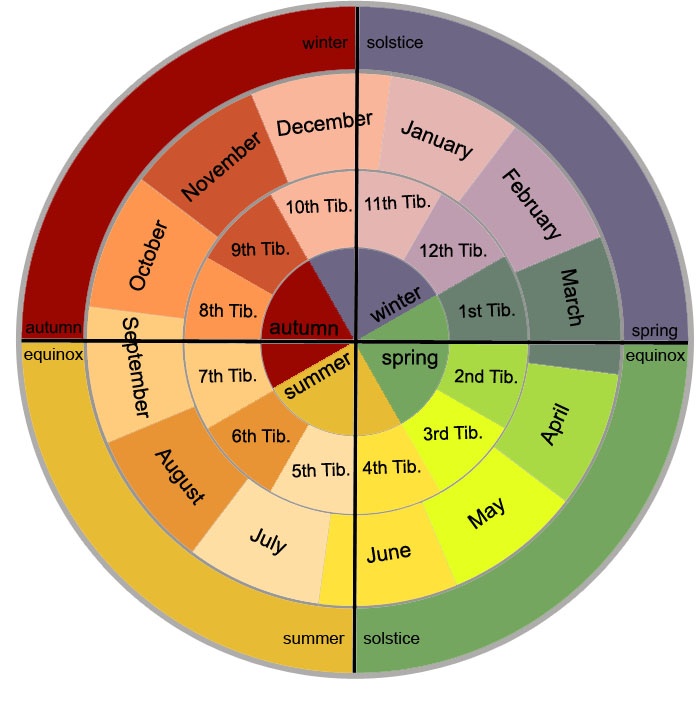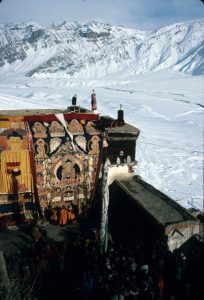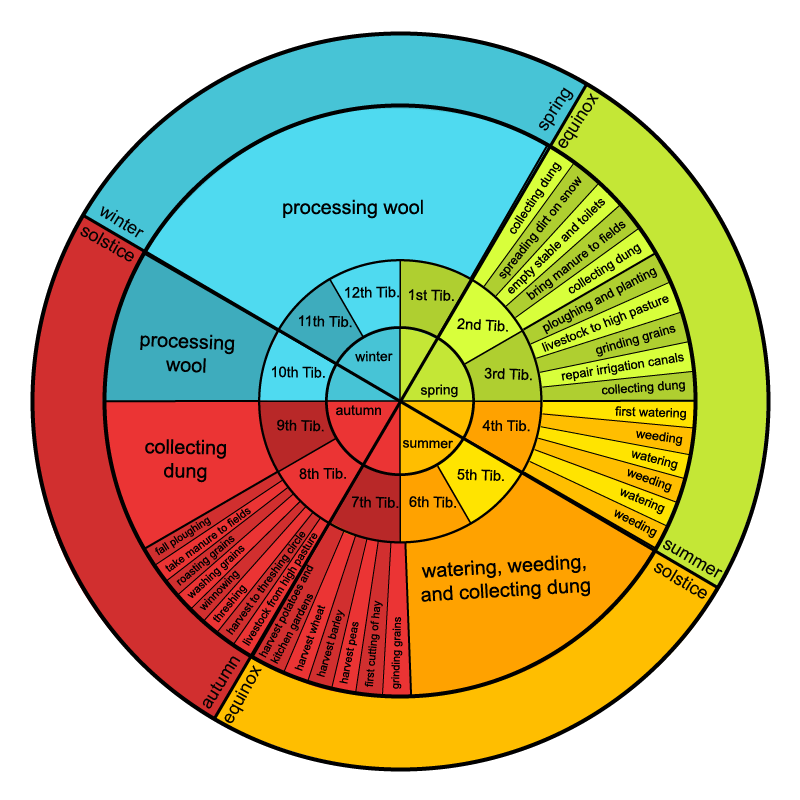Tibetan & Seasonal Time

The Buddhists of Zangskar use the Tibetan calendar, which is found across the HImalayan region in societies that had historic relations with Tibet (Zangskar, Ladakh, Dolpo, Mustang, Sikkhim, & Bhutan). Adapted from the Chinese calendar in the 7th century, the Tibetan calendar is a lunisolar calendar that typically includes 12 months of roughly 30 days.
Each month begins and ends with the new moon, and the full moon always falls on or near the 15th of each month. Because a lunar month lasts only 28.5 days, most Tibetan months of 30 days drop a day or two each month, yet days can also be repeated if the moonrise and moonset occurs over two solar days. Since 12 lunar months do not precisely coincide with a solar year of 365 days, the calendar adds an intercalary or 13th month every few years, so that the Tibetan New Year, called Losar (lo gsar), always falls before spring equinox.
The calendar is adjusted to the four seasons, with the fifth Tibetan month commencing roughly around summer solstice, the 8th month beginning around autumn equinox, and the 11th Tibetan month falling shortly after winter solstice. Within Ladakh, a local ritual almanac adapts the Tibetan calendar by specifying the astrological significance of every day and even hour, in order to predict the most auspicious timings for ritual, life-cycle, and agricultural activities.




